Tylenol Cold
Chewable Tablets
Antihistamine, Nasal Decongestant, Fever Reducer, Pain Reliever,
Runny Nose, Stuffy Nose, Sore Throat, Sneezing, Fever
Antihistamine, Nasal Decongestant, Fever Reducer, Pain Reliever,
Runny Nose, Stuffy Nose, Sore Throat, Sneezing, Fever
Tylenol Cold for Children contains active ingredients as well as inactive ingredients.
The
active
ingredients include
Acetaminophen
Chlorpheniramine Maleate
&n
bsp;
Pseudoephedrine HCl
The
inactive
ingredients include
&n
bsp;
Aspartame
&n
bsp;
Basic Polymethacrylate
&n
bsp;
Cellulose
&n
bsp;
Cellulose Acetate
&n
bsp;
Citric Acid
&n
bsp;
D&C Red #7
&n
bsp;
FD&C Blue #1
Hydroxypropyl Methylcellulose
&n
bsp;
Magnesium Stearate
&n
bsp;
Mannitol
Active Ingredients Acetaminophen
Acetaminophen is a commonly used therapeutic drug with analgesic and antipyretic properties. It is a metabolite of phenacetin. It is used to treat mild to moderate pain and fever, including simple headaches, muscle aches, and mild forms of arthritis. It is useful for patients who cannot take aspirin, such as those taking anticoagulants or suffering from gastrointestinal ulcers or bleeding disorders. Acetaminophen appears to interfere with the action of prostaglandins, substances in the body that cause inflammation and make nerves more sensitive to pain impulses. It also relieves fever, probably by acting on the heat-regulating center of the brain.
![]() 169
degree melting point
169
degree melting point
![]() Very
slightly
soluble
Very
slightly
soluble
&nb sp; Chemical Structure

Chlorpheniramine Maleate
Chlorpheniramine Maleate is used to relieve symptoms of allergies. It works by blocking the effects of histimine, a naturally occuring substance that causes swelling, itching, sneezing, watery eyes, hives and other symptoms of allergic reactions. Chloropheniramine Maleate is an alkylamine type.&nb sp; Chemical Equation
![]() 130-135
degree melting point
130-135
degree melting point
&n
bsp;
Chemical Structure
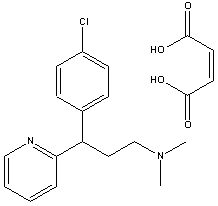
Pseudoephedrine HCl
Pseudoephedrine HCl relieves nasal or sinus congestion caused by colds, sinus infection, hay fever, or other respiratory allergies. It narrows and constricts blood vessels to reduce the blood flow to swollen nasal passages and other tissues, which reduces nasal secretions, shrinks swollen nasal mucous membranes, and improves airflow in nasal passages.Chemical Equation
C10H16ClNO
; Molecular Weight201.6g
; FunctionNasal Decongestant
; Physical Properties180-182 degree melting point
Chemical Structure
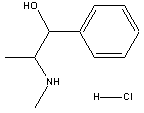
Inactive Ingredients
Aspartame
Aspartame is largely made of two building blocks of protein called amino acids. The two amino acids are aspartic acid and phenylalanine (as the methyl ester). Aspartic acid helps our bodies convert food to energy, and infants and children especially need the phenylalanine found in such foods as milk and meats for building muscles. The third ingredient, called a methyl ester, is also found naturally in fruits, tomato juice and other foods.&nb sp; Chemical Equation
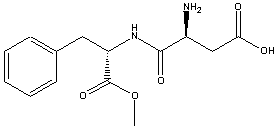
Basic Polymethacrylate
(Methacrylic Acid)
Methacrylic acid is widely used in clear polyacrylate plastics and in surface coatings such as acrylic latex paints. It is also used in making methacrylate resins.Chemical Equation
![]() 16
degree melting point
16
degree melting point
![]() 163
degree boiling point
163
degree boiling point
;
Chemical Structure

Citric AcidTraces of citric acid can be found in numerous plants and animals because it is a nearly universal intermediate product of metabolism and large amounts of the acid can be found in juices of citrus fruits. From here it is then precipitated by the addition of lime; the resulting calcium citrate is treated with sulfuric acid to regenerate the citric acid. It is added to some foods and beverages to produce a pleasant acid flavor; it is also used in medicines, in making blueprint paper, in textile printing, and as a polishing agent for metals.
&nb
sp;
Chemical Equation
![]() C6H8O7
C6H8O7
Molecular Weight
![]() 192.125g
192.125g
Function
![]() serves
as a laboratory reagent
serves
as a laboratory reagent
Physical Properties
![]() White
crystals
White
crystals
![]() odorless
odorless
![]() Moisture
sensitive
Moisture
sensitive
Chemical Structure
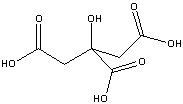
D&C Red #6The color additive D&C Red No. 6 is principallythe disodium salt of 3-hydroxy-4-[(4-methyl-2-sulfophenyl)azo]-2-naphthalenecarboxylic acid (CAS Reg. No. 5858-81-1). To manufacture the additive, amino-5-methylbenzenesulfonic acid is diazotized with hydrochloric acid and sodium nitrite. The diazo compound is coupled in alkaline medium with 3-hydroxy-2-naphthalenecarboxylic acid. The resulting dye precipitates as the disodium salt.
;
Chemical
Equation
![]() C18H12N2Na2O6S
C18H12N2Na2O6S
;
Molecular
Weight
![]() 430.34214g
430.34214g
;
Function
![]() Red
Dye for Cherry Flavored Tylenol
Red
Dye for Cherry Flavored Tylenol
;
Chemical
Structure
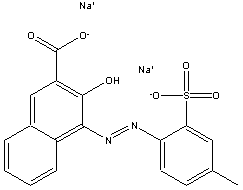
FD&C Blue #1FD&C Blue #1 is a synthetic color additive and is considered "certified." FD&C Blue No. 1, or Brilliant Blue FCF, is a triphenylmethanecolor. This dye is water soluble and is poorly absorbed by the body, making it readily usable in most foods. Many studies have been conducted on FD&C Blue No. 1, and it has shown no evidence of carcinogenicity and no adverse effects other than 15 percent less body weight. Also, no adverse reproductive or developmental effects have been exhibited. The FDA has concluded the FD&C Blue No. 1 to be safe.
&n
bsp;
Chemical Equation
![]() C37H34N2Na2O9S3
C37H34N2Na2O9S3
Molecular
Weight
![]() 792.84314g
792.84314g
Function
![]() Blue
Dye for Grape Flavored Tylenol
Blue
Dye for Grape Flavored Tylenol
![]() Used
in food, drugs and cosmetics
Used
in food, drugs and cosmetics
Physical Properties
![]() 283
degree melting point
283
degree melting point
Chemical Structure
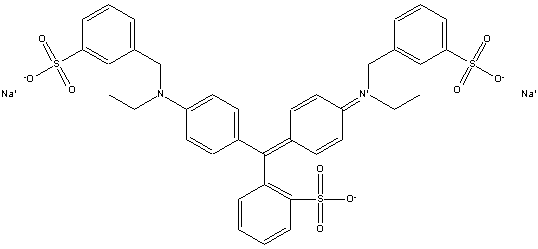
Magnesium Stearate
&nb
sp;
Chemical Equation
![]() C36H70MgO4
C36H70MgO4
Molecular
Weight
![]() 591.2516g
591.2516g
Function
![]() Used
as a food additive
Used
as a food additive
Physical Properties
![]() white
powder
white
powder
![]() 130-150
degree melting point
130-150
degree melting point
![]() density
is 250-320 g/l
density
is 250-320 g/l
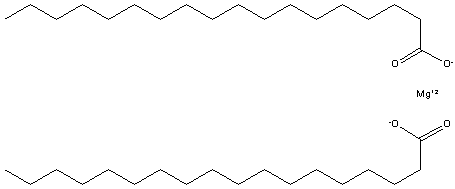
Mannitol&nb sp; Chemical EquationMannitol is a nutritive sweetener (compared to non-nutritive sweeteners such as aspartame and saccharin which provide no nutrients or calories), stabilizer, humectant and bulking agent in foods and supplements. It can be derived from the Manna plant or from seaweed.Mannitol is an osmotic agent and has a high diuretic potential. It is one of several carbohydrates classified as a sugar alcohol or polyols. Because of mannitolís osmotic properties, it promotes the movement of fluid from the intracellular into the extracellular space. In emergency care, mannitol is used in the treatment of head injury to decrease cerebral edema and intracranial pressure, and in the promotion of urinary excretion of toxic substances.

For more information on any of the previous organic molecules just click on the name of the product above in blue.
This
website was created by Lindsey Murray for Dr. Rainer Glaser, Organic Chemistry
Professor at the University of Missouri. The data displayed for each
of these organic molecules (unless otherwise cited by the blue links) can
be found on www.chemfinder.com.
No
data found for the following inactive ingredients:
Cellulose
Cellulose Acetate
Hydroxypropyl Methylcellulose
July
12, 2001